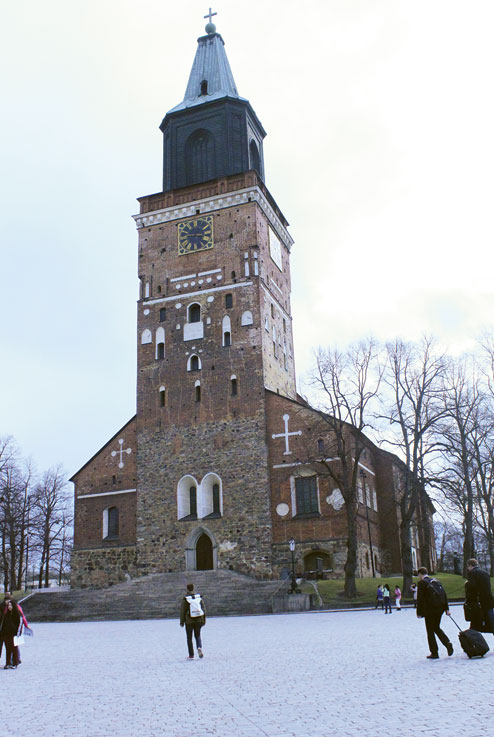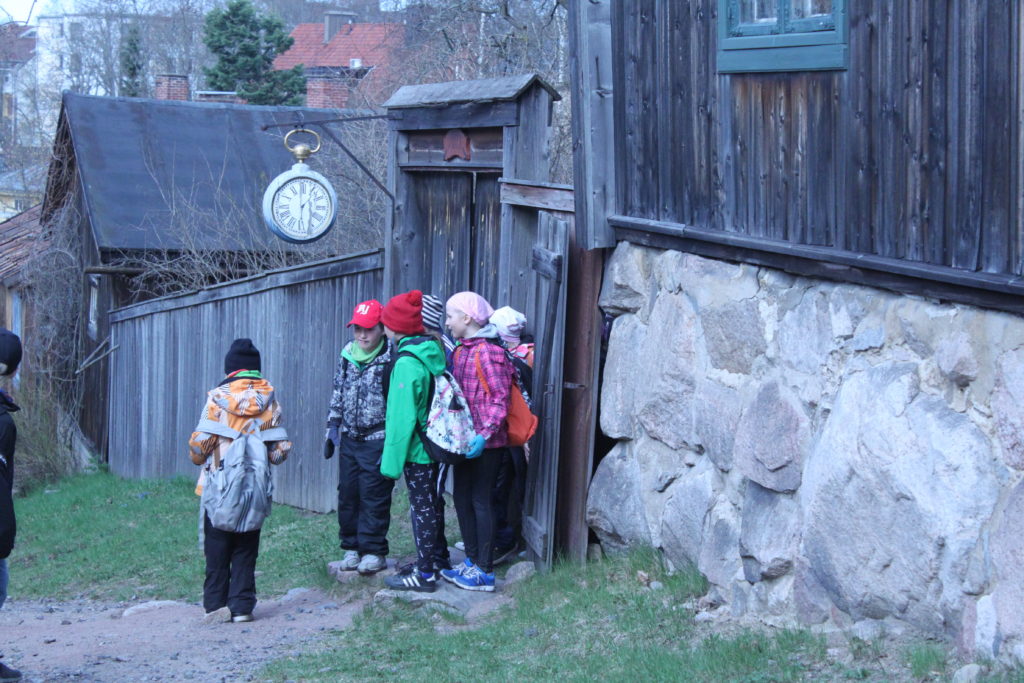Timeless Turku

In this Finnish city, time has slowed down and life moves at its own sweet pace, says Hoihnu Hauzel
If you're thinking of a get-away-from-it-all vacation, Turku in Finland may not be the first name that springs to mind. But I had spent a few days in Helsinki and wanted to get even further away from it all in a place that was quiet and restful — but not too difficult to get to.
So, when someone suggested Turku it sounded just right. It's Finland's third largest city and it's only a 30-minute drive from Helsinki. Of course, by Indian standards it's quite tiny with a population of just 1.8 lakh.
And, I must say, Turku more than lived up to my expectations. As I wandered around, I spotted people cycling and strolling along the banks of the river Aura. Others were pushing their toddlers around in prams and strollers. Even the cars seemed to not be in a hurry — of course, I may have been imagining that.

Turku Castle last saw battle during the Second World War when it was damaged by the Russians
I reached Turku in early May, and spring had brought out daffodils and wild flowers in every nook and corner of the pretty city. In the evenings, the gentle breeze from the Aura brought the townspeople out for a stroll on the river bank.
Summer is, of course, the nicest time of the year in Turku. The Finns do things very differently and the city goes on an official summer break between June and July when all institutions and shops are shut. At this time of year, a large number of Finns head off to their summer villas. It's reckoned that out of a population 5.2 million Finns about 500,000 have summer homes. I couldn't help thinking that the Finns have figured out what a good, balanced life is all about.
My guide to take me round this historic city was Lotta Back, a Swedish-speaking Finn born in Kokkola, a small town in western Finland, who has made Turku her home. This is, incidentally, a university town, with two universities and a polytechnic, and about 25,000 of its inhabitants are students.

At the Luostarinmäki handicrafts museum there are original wooden houses that survived Turku’s Great Fire that destroyed 75 per cent of the city
But don't for a moment imagine that the laidback pace of life in this quaint little city stops the residents of Turku from partying. Even though I struggled to get used to the unusually long days — the sun doesn't set till 10.30pm during spring — I watched people around me gearing up for a good time every evening. Every pub I came across was packed, and the music and parties went on till dawn. And I suspect the people get into office pretty early too — how they manage that I do not know.
My tour of the city began at the historic Turku Castle, which is strategically situated on one bank of the Aura. It was built in the late 13th century, and is, together with the Turku Cathedral, one of the country's oldest medieval buildings.
The most famous story around the castle took place in the 16th century, when the beautiful Swedish queen, Karin Mnsdotter was held prisoner here. One story goes that King Eric XIV of Sweden spotted her selling nuts at a square in Stockholm and instantly fell in love. But I was assured by my guide Lotta that Karin Mnsdotter actually worked as a maid to the king's sister when he made her his mistress.
Turku Castle survived a major fire in 1614, when it was almost entirely destroyed. It was damaged further in 1941, during World War II when Finland fought its hopeless David- vs-Goliath battle against the then Soviet Union. The castle was completely renovated and restored to its present state in 1987.

Map by Nilratan Maity. Not to scale
The people of Turku are keenly aware of its history, and they ensure that the younger generation too stay connected to their roots. Throughout my tour of the city I noticed children on educational trips of the city's major monuments — a part of their school syllabus, I was informed.
Like the castle, the late 13th century Turku Cathedral too has stood the test of time. The cathedral was originally built of wood, but was expanded in the 14th and 15th centuries, with stone as the construction material. The present spire of the church tower, constructed after the Great Fire of Turku in 1827, stands 101m above sea level. Over 5,000 people, including Queen Mnsdotter, are buried here.
Another survivor of the Great Fire is the Luostarinmki handicrafts museum, my last stop. This is an open-air museum, with 18 blocks of original 18th- and early 19th-century wooden houses in their original location. This was the single largest area that completely survived the fire that destroyed 75 per cent of the city. Inside the houses now are household items that once were used by its dwellers.
Small cities have an unusual effect on you. My tour left me feeling like I had lived a slice of the lives of the people of Turku. This feeling was made even stronger as I dug into my meal of freshly-plucked baby potatoes tossed with fresh white asparagus. There couldn't have been a better way to wrap up my day.
TRAVEL LOG
Getting there: Finnair flies six days a week from Delhi to Helsinki. Turku is a half-an-hour drive from Helsinki.
Staying there: Both budget and deluxe accommodations are available in Turku.
https://www.telegraphindia.com/1130609/jsp/graphiti/16986091.jsp
The Telegraph, Sunday, June 9, 2013
Photographs by author



